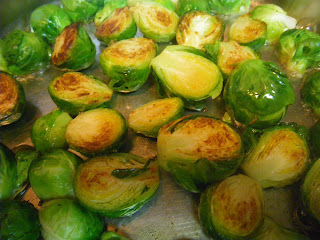5 Cups corn kernels
2 1/2 cups minced onion
2 tablespoons minced garlic
1/2 cup diced celery
1 1/4 cup packed light brown sugar
1 1/2 tablespoons coarse salt
2 tablespoons dry mustard
2 teaspoons yellow mustard seeds
1 1/2 teaspoons celery seeds
2 cups apple cider vinegar
3 - 4 Tablespoons corn starch
makes aprox 7 - 8oz jars
Canning tools
Several canning jars with corresponding lids and ring bands
Lid lifter
Jar lifter
Canning Funnel
Large skillet
2 Large pots
Use your sharpest knife to cut the kernels from the cob - you want to 'cut' the kernels cleanly not 'pop' the kernels with a dull knife. Mince the onion and celery so the pieces end up the size of the corn kernels. Hold the ear of corn stem side down, cut in one slice, from the tip to stem, as close to the cob as possible, turn the ear slightly and slice again. I use a plastic tray with sides, while cutting the kernels, as the kernels fall they won't bounce all over. Some people put down a tea towel to catch the kernels. Another method is to invert a small bowl inside a larger bowl, place the stem down on the bottom of the inverted smaller bowl as you slice.
One Large ear of yellow sweet corn can yield one cup of cut kernels. For this recipe I prefer the yellow corn to white.
Canning the mixture
I use 3 burners on the stove - you need your largest pot to be deep enough to cover your canning jars with an inch of water. Bring to a slow boil, enough water to cover your jars - leaving enough space to accommodate several jars without overflowing the pot - must be at least 180 degrees. Use a large skillet with 2" of water - place your empty jars in the water leaving room for a stack of jar lids, keep this water hot but not boiling, you're sterilizing the jars and softening the compound on the jar lids.
Place everything but the corn starch in another large pot. Bring to a boil - stirring often. When it starts to boil place 3 tablespoons of corn starch in a drinking glass and add enough water to stir into a paste, the add enough additional water to make it thin enough to pour. As you slowly pour your corn starch slurry into the corn mixture stir it in quickly or it could get lumpy. It will reach it's maximum thickness at a boil - if you like it thicker add a tablespoon of corn starch slurry at a time - being sure to wait until it boils.
Once the mixture has been brought to a boil for several minutes and reached the desired thickness, you're ready to place the mixture in the jars.
Canning your Corn Relish
Using your jar lifter, grab a hot jar from the skillet - place the jar close to the relish pot, put the canning funnel into the jar, use a ladle to put the mixture in the jar - leaving 1/2" 'head space' space at the top edge of the jar. Remove the canning funnel and place aside. Using a paper towel dipped in hot water, wipe off the lip of the jar, use the lid lifter to remove a jar lid from the hot water in the skillet, and place it on the jar, screw the Ring Band on just finger tight.
Set full jar aside and fill several. Once you've filled 5 or 6 jars using the jar lifter, gently place the jars in the pot of boiling water. the heat of the boiling water covering the jars forces air out (that's why you don't crank down the ring band) let them boil for 10 min then remove them in the order you put them in the pot. If you have a metal or stone counter top, placing hot jars on a cold counter can cause the jars to break. Place the jars on a towel or cutting board etc. Leave the jars undisturbed over night. As the jars cool, a vacuum forms, pulling the domed center of the lid downward - sealing the jar. The ring band is no longer necessary until the jar is opened.
For Taste Sake
This recipe can be doubled and tripled - I make triple batches all the time - just be sure to triple (or double) ALL of the ingredients - writing it down helps.
Canned goods should be kept in a cool dark place - the vacuum keeps it fresh, the vinegar keeps bacteria from growing - it's basically like pickles. Canned goods are typically good for up to two years.
Other spices that can be added or substituted:
2 teaspoons tumeric
1/2 teaspoon cayenne peppeer
3/4 cup red bell pepper
substitute Dark Brown Sugar for the Light Brown sugar.































